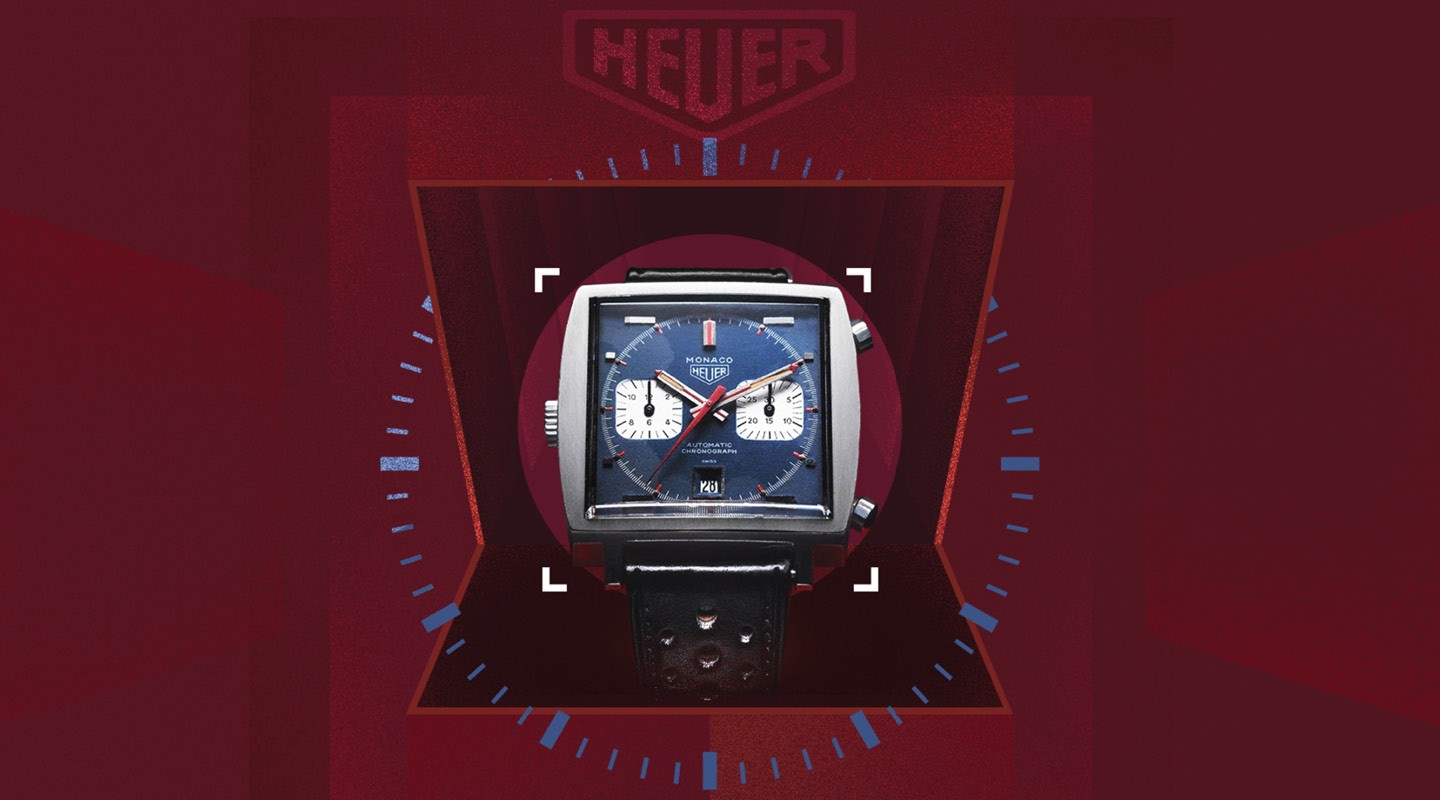
TAG Heuer’s Monaco was introduced in 1969, half a century ago. A world-first then and an icon now, it’s not always had it its own way
How do you solve a problem like the Quartz Crisis? It would be wrong to say this was the only question on Jack Heuer’s mind in the mid-1960s, but the great-grandson of the man who founded TAG Heuer was fully aware of the looming threat of the new watch technology from the Far East. His company, already over a century old, was in good shape, bolstered by successful launches such as Carrera and Autavia, but Jack wasn’t a man to rest on his laurels.
In 1969, Heuer (as the company was until 1985) launched the Monaco. As well as being the first water-resistant square-cased watch ever made, it was also the first commercially available automatic mechanical chronograph – Heuer’s, and Switzerland’s, answer to the precision quartz movements beginning to flood the market.


The Monaco 2009-2019 Limited Edition watch from TAG Heuer
The Monaco 2009-2019 Limited Edition watch from TAG Heuer
Fifty years on, the Monaco is now a bona fide watch design icon. The brushed square case with its pillowed flanks; the crown at 9 o’clock; the blue dial with its twin counters, red detailing and horizontal hour markers; and of course, the Steve McQueen association. But during the course of those five decades, the Monaco has been battered from pillar to post.
But first, back to the mid-1960s and to Jack Heuer, the engineer turned entrepreneur who was transforming Heuer from stuffy instrument maker into one of the coolest brands on the planet. Jack, ever a forward-thinker, had set his mind on an automatic chronograph. Even the best wristwatch chronographs of the day were hand-wound. While today we might think that authentic, in those days it was fast starting to look backward. What value a watch you have to wind to the modern man?
Jack quickly found that development costs were beyond him, so he partnered his company (then known as Heuer-Leonidas after a merger) with Breitling, the other major Swiss chronograph producer of the time, movement specialists Dubois-Dépraz, and the now defunct Buren, which would later be absorbed into Hamilton.
Together, they worked on Project 99, as it was codenamed, and on 3 March 1969, they launched the Chronomatic simultaneously in New York and Geneva. Heuer added the suffix Calibre 11.
Jack though, wasn’t satisfied to launch his dazzling new movement in a round-cased watch, although it was used in both Carrera and Autavia. He wanted something eye-catching, something avant-garde. What could be more attention-grabbing than a square-cased blue-dialled watch with a crown at 9 o’clock?
Jack was a marketing genius and recognised that an unconventional crown on the ‘wrong’ side of the case was a perfect way to illustrate a watch that didn’t need winding every day.
n 1969, Heuer was box office. The new calibre spurred annual sales that were 10 times those of a decade earlier. The design was more polemic, but it attracted the attention of Steve McQueen who wore it in the 1971 film Le Mans, sending it on its way to iconic status. But success didn’t last. The gathering clouds Jack had been so keen to avoid brought with them a storm that almost wiped out the industry. Estimates are largely agreed that during the darks days of the 1970s two thirds of the Swiss watch industry workforce was laid off and around 1,000 companies went out of business.
Heuer struggled, too. In 1982, Jack lost control of his company and left not just the business but the industry. Production of the Monaco stopped, and in 1985 Heuer was bought by Téchniques d’Avant Garde, which modernised the collection with fashionable sports watches.
The move was a good one, and by the mid-1990s, TAG Heuer was resurgent, backed up by the powerful marketing slogan ‘Don’t crack under pressure’ and superstar associations with the likes of Formula 1’s Ayrton Senna. In 1997, the Monaco was reissued as part of a ‘re-edition’ collection, a status upgraded to permanent after the watch-buying public lapped it up. In 1999, TAG Heuer was bought by the French conglomerate Louis Vuitton Moët Hennessy, known as LVMH, and Jack was invited back as honorary chairman.
In the two decades since, the Monaco has thrived, taking many forms along the way. Some were experimental, such as the belt-driven Monaco V4, a totem of TAG Heuer’s advanced watchmaking programme of the mid-2000s; or the reversible Monaco Sixty-Nine, which had an analogue mechanical movement on one side and a digital quartz-powered display on the other. Others were nostalgia-driven, such as the 2009 40th anniversary piece, which aped the 1969 original.
This year, and no doubt to account for the short concentration spans of our visual age, TAG Heuer has chosen to produce five limited edition pieces to mark the half-centenary, each reflecting one of the past five decades, and dropped at various points during the year. To date, we’ve had the 1969-79 model, with its brown Côtes de Genève dial, launched at the Monaco Grand Prix in May; and the 1979-89 model, unveiled at Le Mans in June and decorated with a red metallic dial. TAG Heuer hasn’t said as much (and won’t), but the colour is redolent of Ferrari’s colours. Heuer, after all, was once linked to the Italian marque’s race team.
All five will be limited to just 169 pieces and, it appears, will house a modernised version of the Calibre 11 automatic chronograph, which beats at 28,800vph, compared to the 19,800vph of the original. All five will be swallowed by avid collectors in a heartbeat, so strong is the Monaco name today. Every watch tells a story… some more than others.
How far in advance do you usually book tickets?
- Within 24h Before
- 1-3 Days Before
- 1-3 Weeks Before
- Over a Month Before

























